Signs of a malfunctioning pressure regulator may include:
- – unstable engine operation;
- – the engine stalls at idle;
- - increased or decreased idle speed of the crankshaft;
- - the engine does not develop full power, insufficient engine acceleration;
- - jerks and dips in the engine when the car is moving;
- – increased fuel consumption; – increased content of CO and CH in the exhaust gases.
You will need: hexagon “5”, key “24”, pressure gauge (can be tire).

Unscrew the cap of the fuel pressure control valve at the end of the rail.
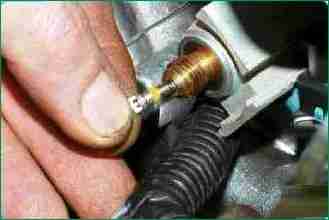
Using the metal protective cap of the tire valve, unscrew the spool (same as in the tire) from the valve.

Connect a hose with a pressure gauge to the valve (you can use a tire pressure gauge).
Fix the hose to the valve with a clamp.
Start the engine and check the pressure on the pressure gauge.
It should be 284–325 kPa (2.9–3.3 kgf/cm 2).
Disconnect the vacuum hose from the pressure regulator. In this case, the pressure on the pressure gauge should increase by 20–70 kPa (0.2–0.7 kgf / cm 2).
If not, replace pressure regulator.
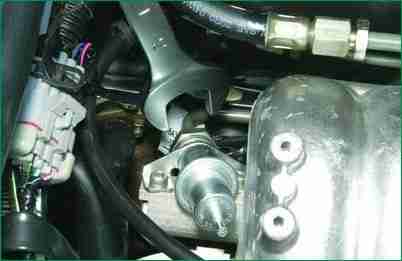
To replace the regulator, loosen the fuel drain line nut, unscrew it and lower it down the line pipe.

Disconnect the vacuum hose from the pressure regulator
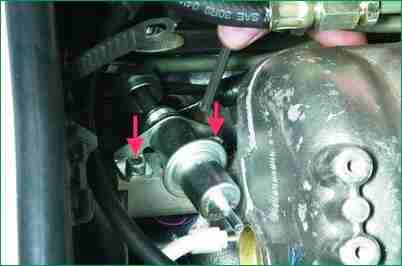

Remove the two bolts securing the regulator to the fuel rail, remove the regulator from the rail socket and then remove it from the line pipe.
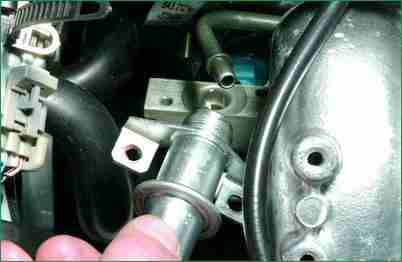
If the regulator o-ring is left in the rail, remove it and put it on the regulator before installation.
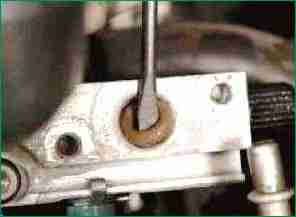
Replace a torn or loose sealing ring.
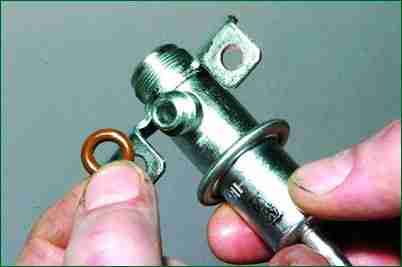
Install the regulator in the reverse order of removal.
Since 2009, the fuel pressure regulator has been installed in the fuel module.
It is attached to the cover of the fuel module.











